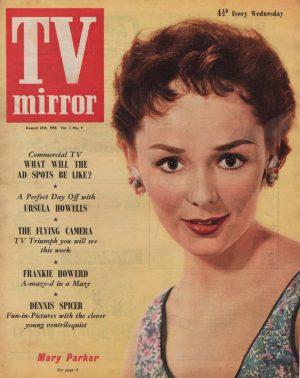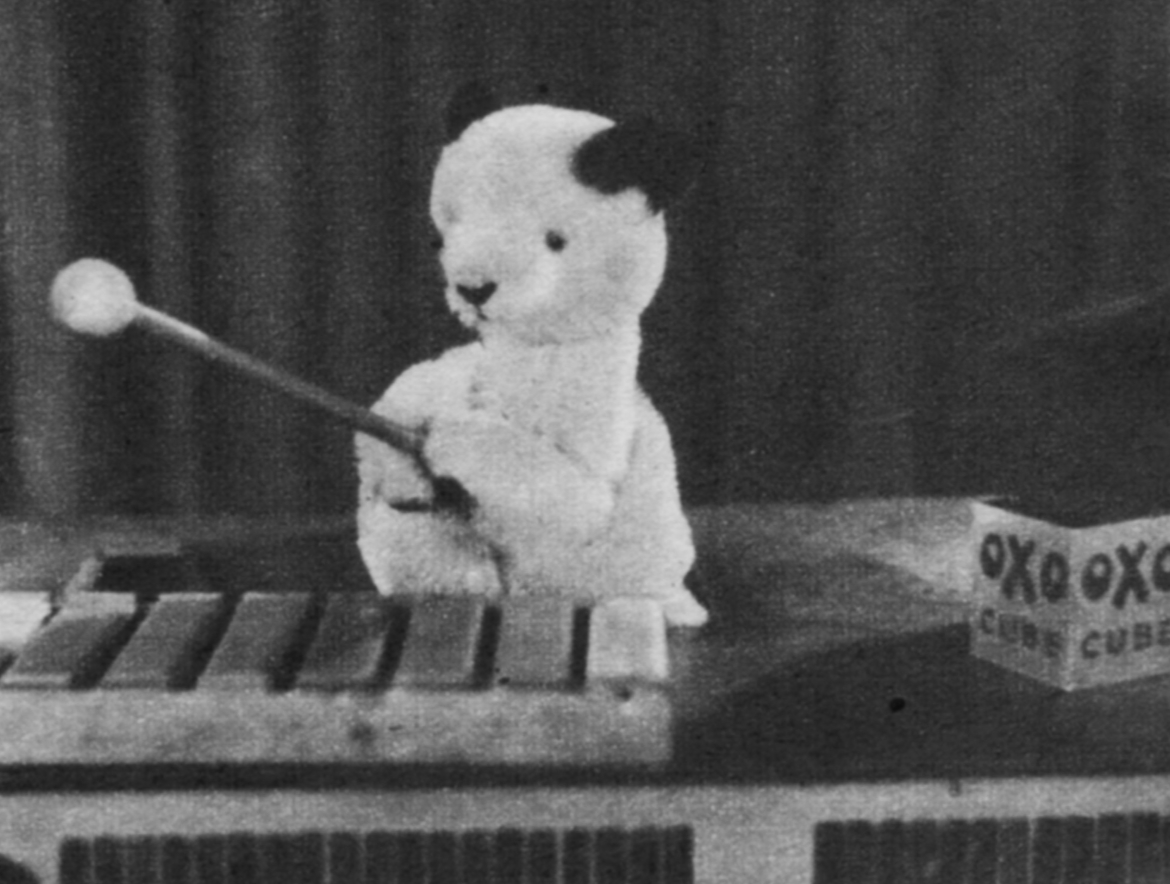What will the ad spots be like?
This is the most persistent question to reach TV MIRROR office during these past weeks. It has come not only from the outer London region, now awaiting its first Commercial TV programmes, but from the Midlands and North as well, testifying to the mounting interest in the new entertainment. Here, then, is the British way with TV advertising described for you


CURIOSITY about the actual programmes which will be seen on commercial TV has, to a certain extent, been satisfied with some advance information.
But people are still wondering about the advertising spots; maybe they are even apprehensive, remembering the brash quick-fire methods used in America and which have been featured in films from time to time.
I set out to discover the answer, and here it is. Point No. 1 is that the idea behind them all is that they shall entertain.
How often shall we see the ad. spots? Out of every sixty minutes, six will be taken up by advertising, and those responsible will do all in their power to make certain that you do not leave your sets during the brief moments when commodities are on the air.
Many well-known personalities have been signed up to sell various goods apart from Sooty: Tommy Trinder, Derek Roy and Richard Murdoch are some of the big names who will be appearing regularly but, and this is important, their message, although designed to sell the same article, will vary. You will not be able to complain, “I’ve seen all this before.” Neither will the personality who has been appearing in the previous programme be seen on the advertising spot. When this minute is up, the next programme will follow and so on.
The Golden Rules
Some of you may be puzzled by this, particularly if you are regular listeners to Luxembourg. There each programme is known by the manufacturer’s name as the Such and Such half-hour. This will not happen on commercial TV.
The time when a commercial will appear will be of importance. For instance, an advertiser would prefer to have his message put across to you at a time when more viewers are able to watch, or just before or after a particularly good programme. For this privilege they will have to pay more — but, and this is the important point, the advertiser cannot demand the same time each week, or the ability to precede a certain programme.
What are you going to see in the ad. spots? The whole operation is being kept secret at the moment, for each advertiser wants to gain the impact of surprise. What are the golden rules of holding your interest and selling a product at the same time? Listen to what Richard King of TV Advertising has to say:
“Firstly, my intention is to establish the fact that it is an advertisement from the very beginning of the spot. We have grown out of the days when it was thought clever to fool the public by giving them pure entertainment for 95 per cent of the show and then plugging the commodity in the last 5 per cent. When an audience sees this at a cinema, haven’t you heard the ripple of laughter and the jeers?”
I agreed. He then went on to say that some of the commercials he is producing will be in the form of animated cartoons drawn by those two clever people, Halas and Batchelor, who produced Animal Farm. “The advantage of cartoons,” said Richard King, “is that they bear repetition more than dramatic incidents.” Finally I asked him what the advantage would be of having a star selling the product.
“There’s been a lot of nonsense spoken about stars thinking selling is beneath them,” he said. “When the style of product demands a star then we shall use one. After all, they’ve reached the top because they are good personalities and good actors.
“When we want them and can afford them then we shall use them to good advantage.” Then he added: “Equally when the occasion rises we shall use unknowns. Each will have his or her purpose.”
Next I met Don Archer of Bantock Productions — an Englishman who went to America and then started a TV Company in London to advise agencies and their clients on the right way to produce commercials.
He doesn’t believe in stars. He says: “When you have a star, the public know that the star is being paid to sell the product and they immediately tend to disbelieve the message.
“The object of a commercial is to sell sincerely — to point out why this article is better than that one. In other words, to appeal to the viewers’ common sense.”
He went on to say that the ideal way of advertising on television is to let the product speak for itself. There is no need to have a demonstrator if the article is shown. For instance, if it is a refrigerator, the viewer can sit back and see this shelf and that storage compartment with just a voice explaining how it works.
“Relaxed” is a word Don Archer uses constantly. “Believability” is another — by this he means that overselling is as much a crime as underselling. He really believes that commercial television will act as a general stimulus to the country. People will see more things that they want and will work harder to get them.
He categorically states that the power of advertising is the basic cause of the high standard of living in the States and he believes that, in time, it will have a similar effect over here.
He also says that what is good advertising for the London area will not appeal in the North and has opened an office in Manchester to advise people up there along those lines.
I have seen quite a few of these commercial spots and whether they have been cartoons, dramatic episodes or song jingles they have been entertaining and all in the best of good taste. In this country a very strict code of ethics rules advertising and it has been observed and upheld strictly on television.
£1,000 a Minute
Celebrities will rub shoulders with unknowns and remembering how you, the viewers, have promoted some of the BBC’s television announcers into nationwide personalities, it is amusing to speculate who, from the many unknowns of today, you will have elevated to a similar status in a few months’ time.
And here is a final thought. The cost of filming an average one minute commercial works out at about £400 [£8,350 in today’s money allowing for inflation – Ed] — and this is one that does not employ a star. A cartoon costs more than £1,000 [£21,000]. In many cases this is more money than many a half hour show costs, so there seems little doubt that with not only the ITA programmes and the commercials but also the BBC’s counter-attack ones, you are going to find it very hard to leave your sets and select a time to make your tea and sandwiches.
I only hope none of you will starve to death for the sake of entertainment!
About the author
Geoffrey Kino wrote for TV Mirror magazine







Very informative article,a good read.